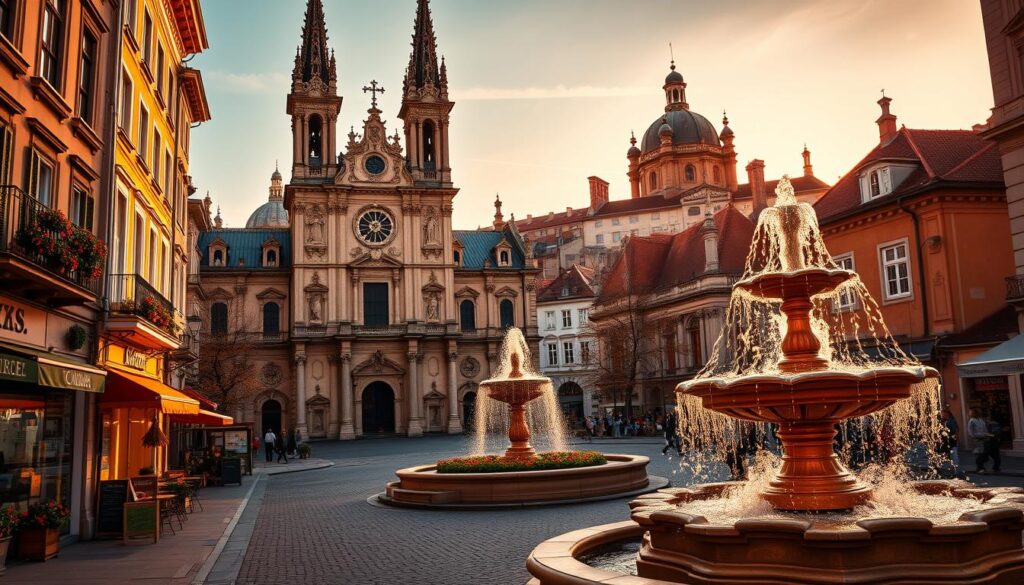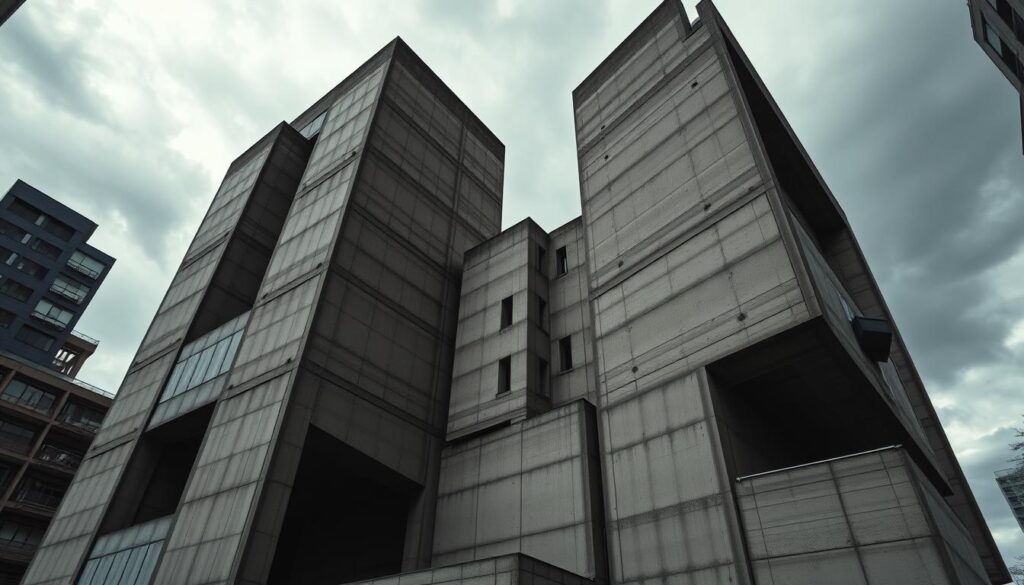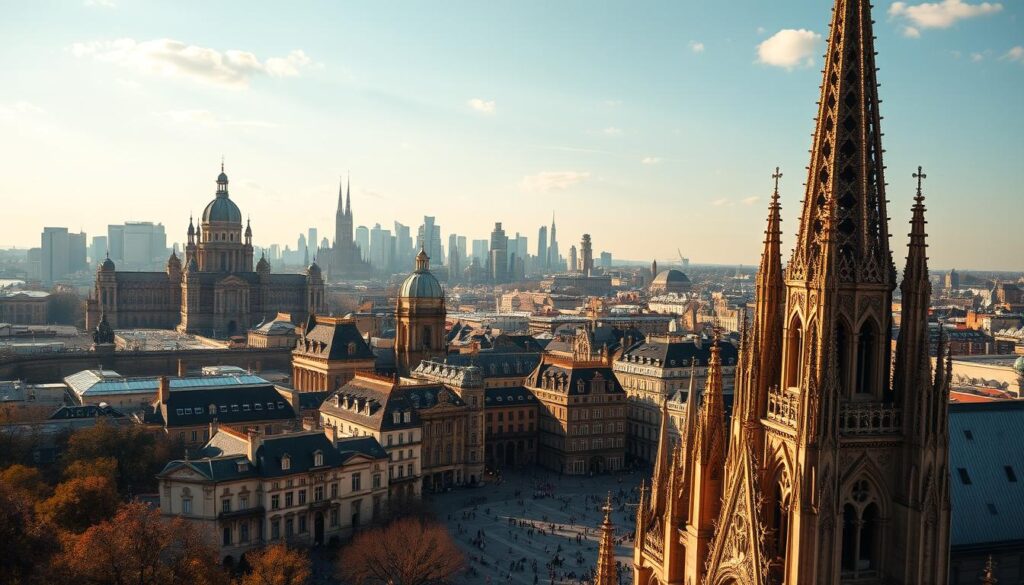Research shows that Instagram users like pictures of global landmarks to such a degree they make up more than 60% of all top-liked posts. The buildings of various heights guide viewers through details about cultural evolution and history and technological advancement. The post examines the awe-inspiring buildings which establish cities as worldwide attractions.
The architectural identity of every city originates from mixing historical elements together with modern design.
People who explore with cameras will find unlimited photo opportunities in these destinations.
Through this article readers can explore both established historic sites along with contemporary architecture. Each architectural style presents its individual appeal through buildings that belong to art deco aesthetics and Brutalist structure designs. People who plan future tours or imagine their upcoming travel should consult this blog to discover architectural landmarks from across the world.
| Location | Landmark | Key Features |
|---|---|---|
| Venice | Ca’ d’Oro | Symmetry, intricate stonework |
| Vienna | Opera House | Ornate interiors, modern updates |
Key Takeaways
- The guide introduces you to those cities whose architectural designs stand apart from others.
- The guide offers visitors a tour that includes important historical buildings and contemporary constructions.
- Read effective strategies to document the arresting quality of these landmarks.
- Different architectural styles contain various vital meanings that need to be understood.
- You will discover paths to develop future architectural expedition goals through this resource.

Introduction to Architectural Travel
Cities narrate their historical accounts by using their constructed architecture alongside their designing elements. Architectural travel enables people to perceive the spiritual essence that defines each location rather than being limited to standard sightseeing activities. The builders incorporate their cultural influences into these structures which present both historical ancient buildings and contemporary modern towers.
Unique building designs begin their inception in this phase
Thematic alignment between design principles regulates the formation and aesthetics of urban areas. Every development spanning past to present expands the story that a city recounts. During the course of history architects have constructed buildings which inspire succeeding generations to this day.
Building design through Gothic Revival and neo-futuristic styles uses grandeur as a key feature for cathedrals while reflecting innovation through sleek facade designs. Building styles communicate the development chronicles of metropolitan areas beyond design concerns alone.
“The practice of architecture ensures the methodical usage of empty spaces. – Philip Johnson”

The architectural tour of a city provides viewers the opportunity to witness historical milestones. Every piece of public art and skyline component collectively maintains cultural heritage value in the city. More than just general information is provided because readers will find concrete examples of architectural development throughout different international locations in forthcoming sections.
The following content addresses Art Nouveau design together with Brutalism along with additional architectural movements. Design reveals itself through different perspectives that create separate visions toward how our world takes shape. Make some time to look at urban building construction because they contain much more than their basic purpose through their ability to narrate history to us.
The Evolution of Architectural Styles
Design expresses society through all its phases beginning with ancient temples all the way to contemporary skyscrapers. Architectural styles have underwent continuous development since antiquity because of cultural changes and historical developments and technological progress. Throughout history human advancement and ingenuity have appeared in a continuous architectural evolution.
Designs from that period concentrated on delivering purposes alongside symbolic interpretations. Two famous examples of early architectural wonders include the pyramids of Egypt together with the Parthenon located in Greece. The designed structures presented themselves as constructions capable of conveying both supremacy and religious devotion. Newly developing societies merged their architectural creation with engineering expertise to evolve their style of design.
The Renaissance period brought substantial changes by focusing on using symmetrical arrangements and proportional design framework. The modern design fundamental principles developed during this era. The Industrial Revolution brought steel and glass interests to construction which resulted in revolutionary new building possibilities.
| Destination | Highlight | Key Feature |
|---|---|---|
| Paris, France | Eiffel Tower | Iconic iron lattice structure |
| Barcelona, Spain | Sagrada Familia | Gothic and Art Nouveau fusion |
| Dubai, UAE | Burj Khalifa | World’s tallest building |
| Kyoto, Japan | Kinkaku-ji | Golden Pavilion |
The twentieth century saw emergence of two design movements called Art Deco and Brutalism that embodied their contemporary period.
Modern technological innovation drives progressive project development all around the world.
Gothic Revival Wonders
Characteristics of the Gothic Revival movement consist of point-shaped archways together with elaborate design elements. The style uses historic medieval architecture to create modern designs that match artistic greatness. Gothic Revival architectural constructions represent cultural history through their religious buildings and their famous front elevations.
Dubrovnik & London: Iconic Facades
The Sponza Palace in Dubrovnik showcases Gothic architecture to its highest level. This medieval building unites palace and church components to reflect the extensive past of the town. Every photograph taken in front of this building becomes magical because of its intricate decorated facade coupled with window arches.
The Houses of Parliament together with Big Ben exemplify Gothic Revival architecture within London. Each defining architectural element of these eminent structures includes pointed arches together with spires overlaid by intricate stone work. The buildings showcase the traditional roots of the city which interacts successfully with its modern development.
| City | Landmark | Key Feature |
|---|---|---|
| Paris | Eiffel Tower | Iconic iron lattice structure |
| Paris | Notre-Dame Cathedral | Gothic architecture |
| Barcelona | Sagrada Familia | Modernist design |
| Barcelona | Park Güell | Organic forms and mosaics |
San Miguel & Montreal Highlights
Gothic churches reside throughout the Mexican town of San Miguel de Allende. Many visitors from diverse locations are attracted to see these buildings thanks to their ornate decorations and their tall architectural elements. The unique local approach in this Mexican town enhances its preservation of the Gothic tradition.
The Notre-Dame Basilica of Montreal stands as another magnificent attraction. Its vibrant stained glass and elaborate woodwork showcase the art of Gothic Revival. The building should be on the list of every architectural history enthusiast.
The buildings demonstrate the perpetual attraction of Gothic Revival as an architectural style. Churches and historic towns become accessible through this versatile style which continues to inspire all individuals visiting them. Visit site locations that showcase these architectural wonders as part of your future sightseeing tours.

Embracing Art Nouveau and Modernism
During the late 19th century Art Nouveau introduced its foundation by incorporating natural elements which focused on flowers and vines. Modernist movements concentrated on achieving simple working designs. Through their challenges of conventional construction the two movements enabled the creation of iconic buildings across the globe.
Innovative Designs in Barcelona and Sydney
Barcelona’s skyline is a reflection of Antoni Gaudí’s brilliance. His masterpiece, the Sagrada Familia, combines Gothic and Art Nouveau elements. The mixture of glass elements with organic shapes within the design produces active lighting effects alongside shadow interactions. Visitors must see this structure when touring Barcelona’s attractions.
New South Wales serves as home to the Modernist masterpiece which is the Opera House of Sydney. The structural elements of the building resembling sails showcase the innovative aesthetic approach of the movement dedicated to innovation. The structure excels as a statement of contemporary architecture through its implementation of sunlight along with its unblocked room design.




